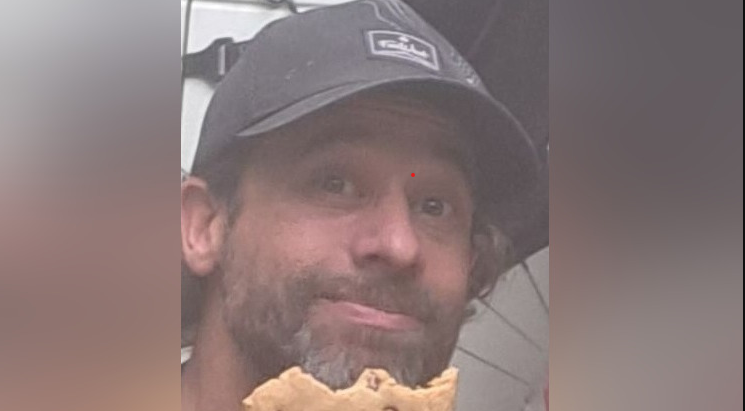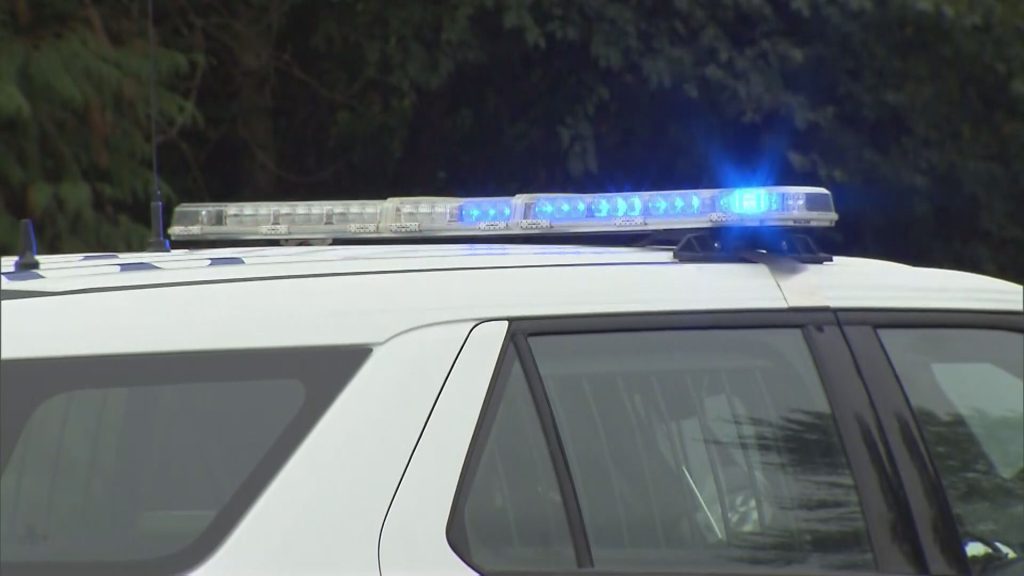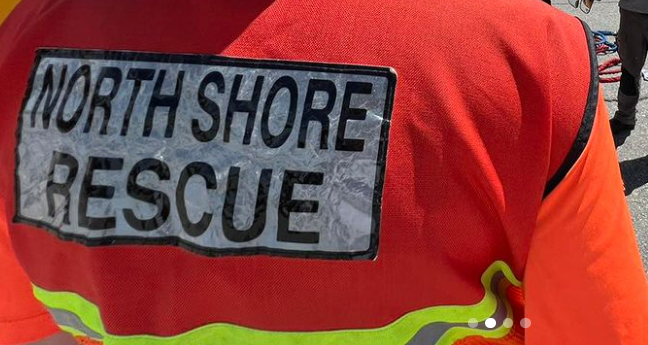Missing Michael: The brown van tip
Posted February 8, 2022 9:50 am.
Last Updated February 8, 2022 10:12 am.
How could a four-year-old Victoria boy simply vanish in just a few minutes, on a Sunday afternoon, from a busy parking lot near an elementary school playground? How is it possible that no one witnessed his probable abduction?
Early on in the investigation into Michael Dunahee’s disappearance, a 10-year-old girl describes seeing a boy she believes was Michael get into a brown van parked in a nearby alley.
The child tells police the van is older with tinted rear windows, and that there is a tan coloured bulldog in a cage and a large plastic bag on the floor or the vehicle.
Police release this information and a tidal wave of brown van tips flood in. Within days there are 1,300 brown van tips. In the years to come there would be thousands of leads related to a brown van.
The credibility of the child witness’ information is soon called into question, but it is too late. The brown van tip has taken on a life of its own.
“It was learned that it was likely untrue, that it was made up because children want to help. There’s a very specific training you need now to do child interviews, and I’m not putting that on the members, you know? It’s very easy for kids that are scared to want to help and to think they’re helping by coming up with something from their imagination,” Det.-Sgt. Michelle Robertson, the current Victoria Police lead on the Dunahee case, said of how she views the tip now.
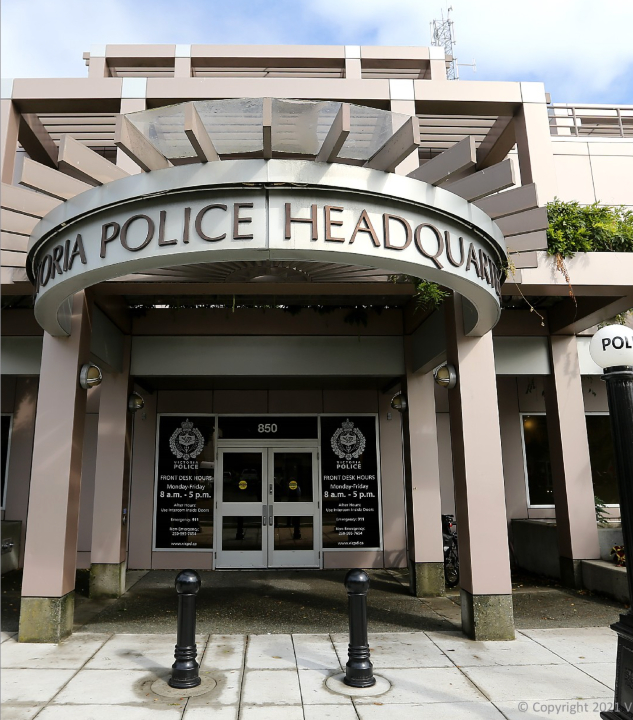
FILE – Victoria Police headquarters. (Courtesy Instagram/Victoria Police)
Robertson bases this determination on subsequent interviews police conduct with the child witness and then follow up when she is an adult as well. The police had independent people looking at the statement, seeing inconsistencies in the story that weren’t making sense and weren’t lining up.
Although Robertson believes the child’s information about the brown van was not credible, she stops short of dismissing the significance of the brown van altogether.
“I’m not saying there wasn’t a brown van. There could have been one. That’s the tricky part if you say, oh, no, hang on guys we believe that wasn’t true. Are you now inhibiting people from coming forward with information? It’s tricky.”
In 1991, Al Cochrane is a young active father and Victoria Police officer. He often played touch football near Blanshard Elementary and regularly took his kids there to play.
Michael’s disappearance hits home for him on a personal level. But the now-retired detective sergeant was not involved in the initial investigation back in 1991. It is later in his career that he gets an opportunity to take charge of the file.
“I got hurt at work and I had surgery. And when I came back from that surgery, they created a cold case investigator. So the Michael Dunahee case became my responsibility. My job was to investigate that and other cold cases, but obviously, the Dunahee file was the biggest case,” he explained.
Related articles:
-
The Michael Dunahee investigation: The early days
-
Missing Victoria boy Michael Dunahee focus of new podcast
-
The story of a Victoria boy who vanished without a trace
-
Missing Michael: ‘Hellcats’ friendships forged in tragedy
Cochrane is excited to take on Michael’s case. He enjoys this type of work, going back and reviewing the files. He examines every single one of the tips over the years he has conduct of Michael’s case. Cochrane is the first detective since the original investigators who is able to dedicate full-time attention to the file. He inherits a box of tips that had not been investigated.
“The first thing you do is you go through all those tips, you prioritize them, and then you try to investigate them until you can either discount them or put them into a file that needs further investigation. I started going through eight file drawers full of tips, and one tip could have numerous tips in it like, there’s always been something about a brown van involved in the file.”
There’s one brown van tip that stands out in Cochrane’s memory. It came in from a man who lived nearby the area where Michael vanished.
“It’s Sunday morning, his kids are going across the field to go get some eggs and milk for breakfast. And so he’s watching them and around the time there’s a brown Volkswagen van, that’s going up the alley behind Quadra that goes between Kings and Hillside. And he specifically remembers it because he had a friend who had a very similar van and he thought that was his friend. But it ended up not being his friend and he knew the year just by how the van looked,” Cochrane recalled.
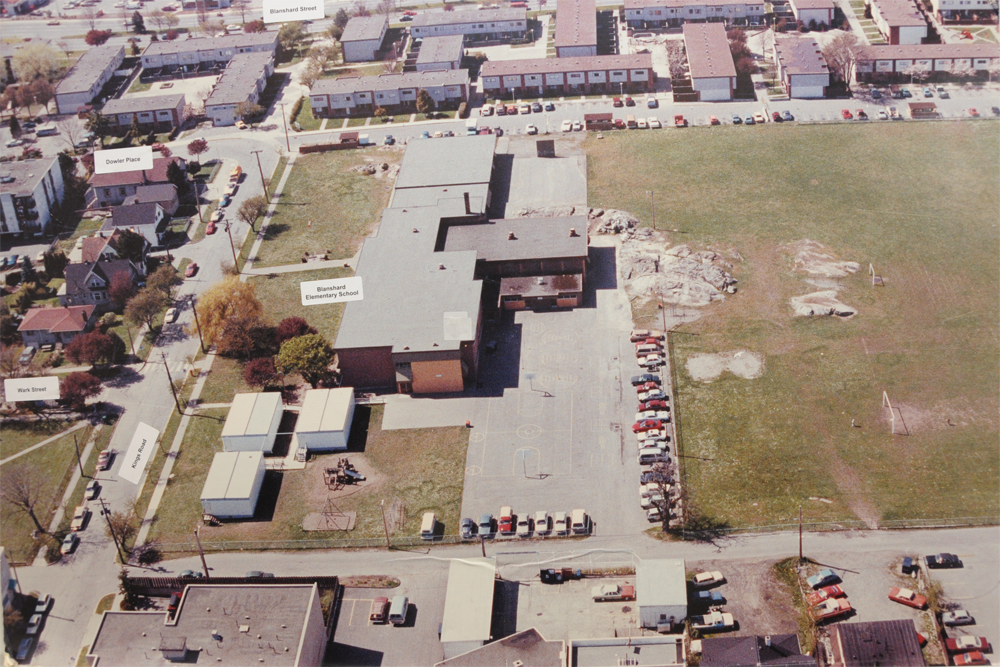
An aerial view of Blanshard Elementary in Victoria, B.C., the area where Michael Dunahee went missing when he was just four in 1991. (Submitted)
A brown van becomes one of the main focuses that Cochrane works on as he believes it needs a lot more investigation.
In researching the ‘Missing Michael’ podcast series, a number of brown van tips have surfaced — one from a different child at the park that day, and another from a woman who was working nearby. Both believe they observed a couple — a man and a woman — in such a vehicle near where Michael disappeared.
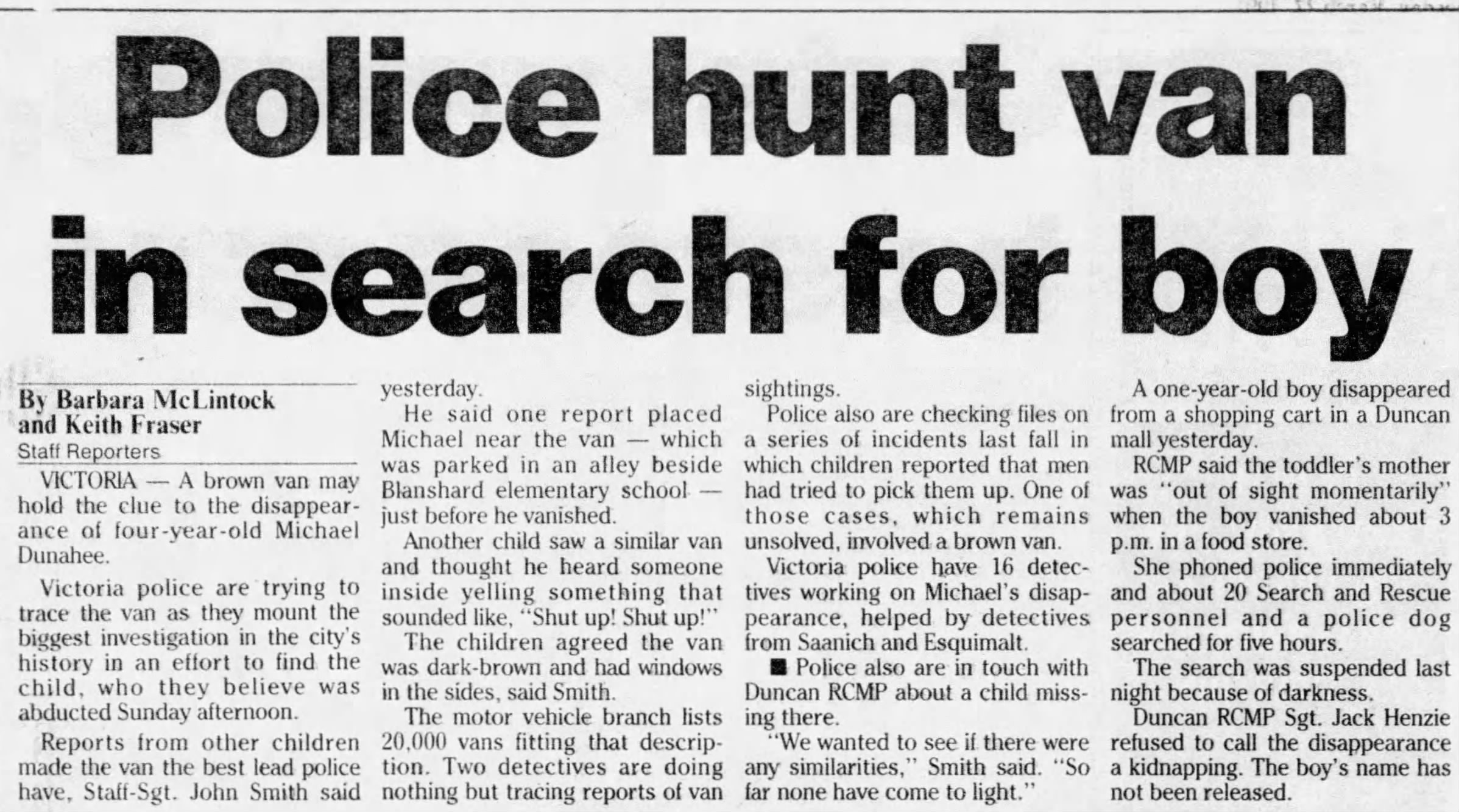
A Province newspaper headline from March 27, 1991, related to the Michael Dunahee case. (Courtesy newspapers.com)
The woman is hypnotized in an effort to pull specific memories of the van from her subconscious.
“They tried to say, ‘Well, what kind of van was it?’ I don’t know. I don’t know cars, but it felt to me it should have had some sort of emblem on the front of it, but there wasn’t. But it was a light tan and a little darker cream at the bottom. The age was old. And I saw half of a license plate,” the witness, whose name is being withheld, recalled.
Today, Cochrane is retired, his children are grown and have left home. He lives just outside of Victoria with his wife and large dog, Tuka. He’s soft spoken and contemplative as he looks down the years to consider the importance of the brown van tip.
Cochrane chooses his words carefully as he discusses why he believes it is still possible for the Michael Dunahee mystery to be solved.
“We had very good suspects that we looked at, but there wasn’t that one spark that said okay we’ve got some corroboration of the information that we know, and we are going in that direction. I certainly found some suspects that I believed needed a lot more investigation. And that was still ongoing when I retired.”
Now, 30 years on, Cochrane is hopeful ‘Missing Michael’ could move the investigation forward.
“Podcasts, I think, are valuable tools because they bring a file back to light. People who may have more time than an investigator, that’s carrying 20 files. I think that a lot of good can come from it. I believe it could make a difference because somebody out there knows something and at some point, whatever, stopping them from coming forward, it’s going to break down.”
Like other Victoria Police officers who have worked Michael’s case over the years, Cochrane’s main motivation remains finding answers for Crystal and Bruce Dunahee.
“When I was doing the investigation a real driving factor for me was could I bring peace of mind for the Dunahee family to know one way or the other what happened to their son. When you invest that much time of your life into something, I do feel some remorse for not being able to bring a conclusion to it.”
If you have information about the disappearance of Michael Dunahee, please go to Michaeldunahee.ca and click on the report a tip button. You can also report a tip here.
‘Missing Michael’ is a 10-part podcast series for Rogers Frequency Network.
You can listen to this series and other Island Crime episodes on all podcast platforms.
Rogers is the parent company of this station and the Frequency Podcast Network

